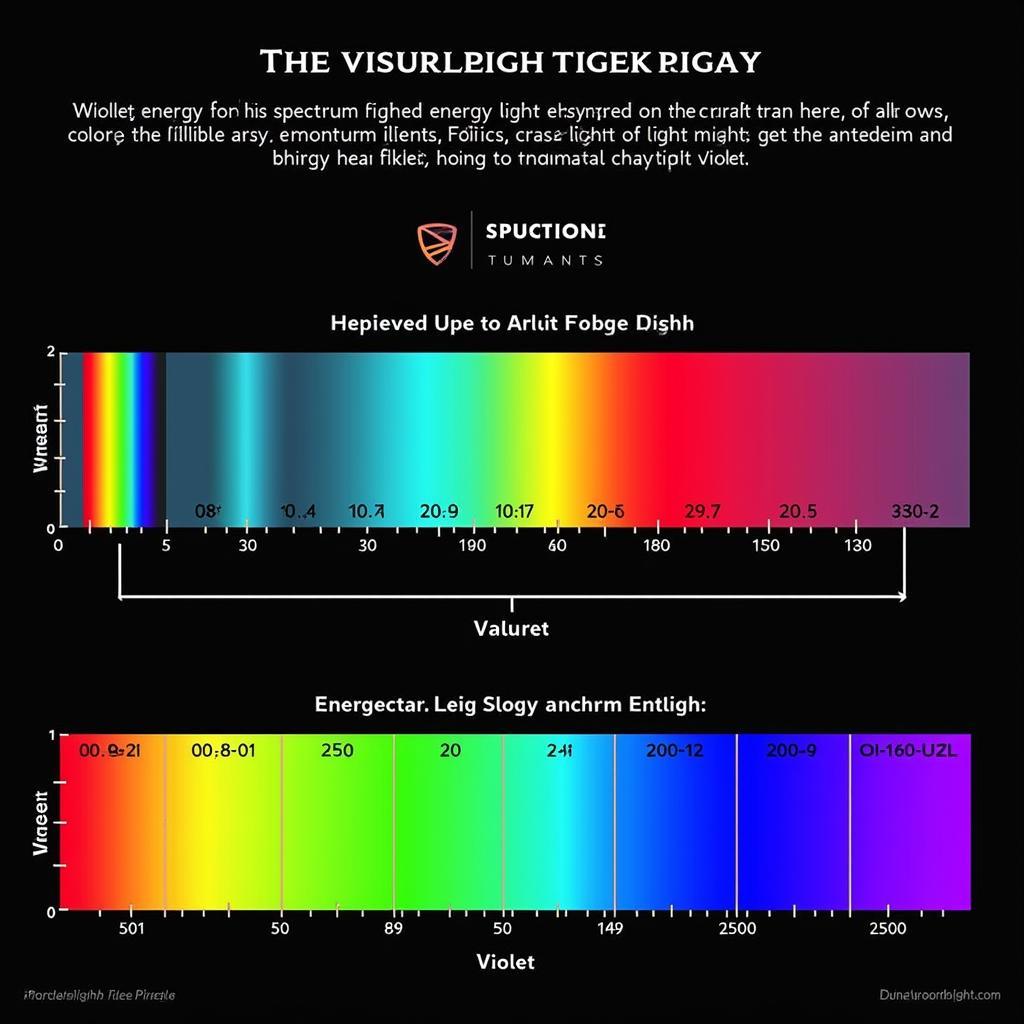Have you ever wondered about the energy levels within the rainbow? It’s a fascinating aspect of light we can’t see with our naked eye. When we talk about the visible light spectrum, we’re looking at a range of colors, each with its own wavelength and frequency. These factors directly relate to the energy level of the light. So, which color of visible light packs the most energetic punch?
Understanding the Electromagnetic Spectrum
To grasp the concept of energy in light, we need to zoom out and consider the electromagnetic spectrum. This spectrum encompasses a vast range of electromagnetic radiation, from low-energy radio waves to high-energy gamma rays. Visible light, the colors we see, occupies a tiny sliver of this spectrum.
The Relationship Between Wavelength, Frequency, and Energy
Within the electromagnetic spectrum, energy, wavelength, and frequency have a direct relationship:
- Wavelength: The distance between two successive crests of a wave. Shorter wavelengths correlate to higher energy.
- Frequency: The number of waves passing a point per second. Higher frequency means higher energy.
- Energy: The capacity to do work. In the context of light, higher energy light can cause more significant changes in matter.
These three properties are interconnected: as wavelength decreases, frequency and energy increase.
Visible Light: A Spectrum of Energy
Now, let’s focus on the visible light spectrum. We perceive this spectrum as a smooth transition of colors:
- Red: Longest wavelength, lowest frequency, lowest energy
- Orange
- Yellow
- Green
- Blue
- Indigo
- Violet: Shortest wavelength, highest frequency, highest energy
As you move from red to violet, the wavelength decreases, and the frequency and energy increase.
And the Winner Is… Violet!
Therefore, violet light within the visible spectrum possesses the highest energy. This means that violet light photons carry more energy than any other color in the visible spectrum.
 Visible light spectrum with energy levels
Visible light spectrum with energy levels
Real-World Implications
The higher energy of violet and blue light has real-world implications. For instance:
- Sunburns: The higher energy of UV light, which is beyond violet on the spectrum, is the reason we can get sunburned.
- Blue Light and Sleep: The relatively high energy of blue light emitted from electronic devices can interfere with melatonin production, potentially disrupting sleep patterns.
Beyond the Visible: Exploring Other Forms of Light
While violet light reigns supreme in the visible spectrum, it’s crucial to remember that it’s just a small part of the larger electromagnetic spectrum. Beyond violet lies ultraviolet (UV) radiation, X-rays, and gamma rays, all boasting even higher energy levels. These forms of light are invisible to the naked eye but play crucial roles in various fields, including medicine, astronomy, and technology.
Conclusion
So, the next time you admire a rainbow or marvel at a sunset, remember the invisible dance of energy within those vibrant colors. While we perceive the beauty of the entire spectrum, violet light stands out as the most energetic player in the visible range, reminding us of the powerful forces at play within the world of light and color.